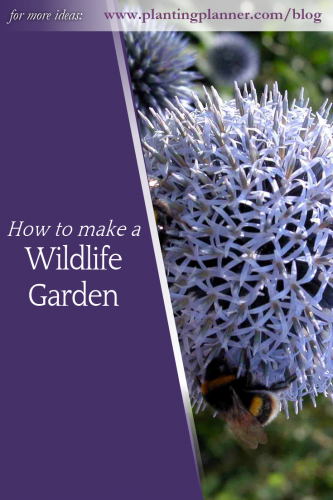from The Weatherstaff PlantingPlanner – intelligent garden design software
Need a Wildlife Friendly Planting Plan? Click here
One of life’s great pleasures is taking a morning stroll to admire the day-to-day changes in the garden. Soft, downy buds appearing on the Magnolia stellata – more numerous with each passing year, the bronzy, unfurling fronds of woodland-loving ferns, the exquisite scent of summer roses, evoking memories of crushing petals to make ‘perfume’ as a child in my grandfather’s garden.
But there is something even more special in observing others sharing our garden with us. Counting the different varieties of butterfly on the dancing clusters of lavender-pink Verbena bonariensis. The low buzz as you pass the lavender border. A thrush, driven by freezing temperatures, squeezing on to the bird table to enjoy its lunch.
Many gardeners are actively seeking out ways to help replace the habitats that have been destroyed over recent years. Private gardens in Britain cover well over 1 million acres, so it is hugely satisfying to know that efforts in our own gardens are contributing towards the conservation of our native wildlife.
And creating a haven for wildlife brings such rich rewards. Filling our garden borders with nectar-rich flowers and berrying shrubs are a delight for the gardener as much as for the consumer of their bounty. Providing valuable food sources at the beginning and end of the garden year – by planting early spring flowers and plants with late season seedheads and berries – carry the added bonus of supplying year-round interest in the garden.
Wildlife Friendly Plants
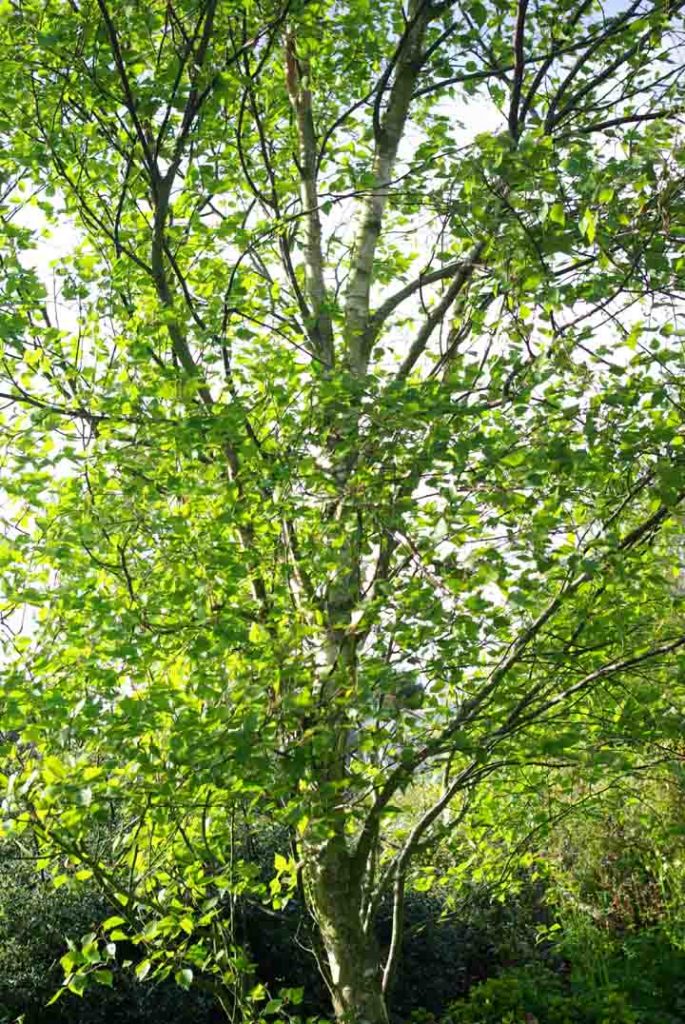
1. All trees encourage wildlife into the garden, attracting birds and bats, as well as pollinating insects. Beneficial fungi flourish among the tree roots, which help to improve soil fertility. The Silver Birch (Betula pendula) is a slender, deciduous tree with an elegant open habit, making it great for smaller gardens. It is recorded as supporting up to 229 different insect species and its seeds are loved by greenfinches, goldfinches, siskins and redpolls.
2. Rosa rugosa is a vigorous wild rose, with dark green, wrinkled leaves and fragrant red, pink or white flowers. The flowers, with their contrasting yellow stamens, are produced throughout the summer and autumn, followed by a magnificent display of glistening cherry tomato-like hips.
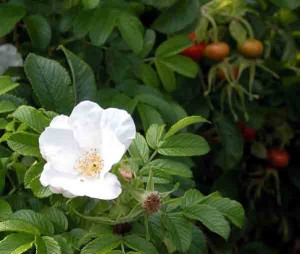
The huge crop of hips is coveted by birds, particularly finches. When grown as a hedge, it provides hiding places throughout the year for small creatures.
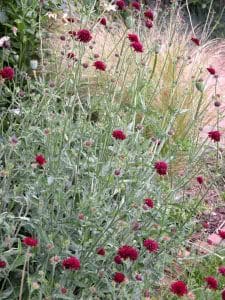
3. Knautia macedonica is a versatile plant, equally suited to informal cottage gardens and more formal or contemporary styles. A profusion of deep crimson, pincushion-like flowerheads bob above narrow, branching stems all summer long and the round seedheads prolong the display. The flowers are a magnet for bees and butterflies.
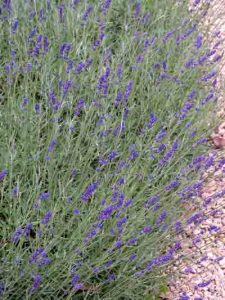
4. A traditional favourite, lavender is a bushy, evergreen shrub, grown for its wonderfully fragrant summer flowers and aromatic foliage. Lavender is rich in nectar and is well-loved by bees, as well as other friendly insects. Any seedheads left on the plant are attractive to finches.
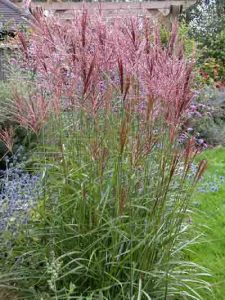
5. An elegant, ornamental, perennial grass, Miscanthus sinensis ‘Nippon’ puts on a year-round performance. Its linear, mid-green leaves have a narrow white midrib, taking on russet tones in autumn, before fading to buff.
Late summer, and the feathery, reddish flowerheads appear, becoming silvery-beige as they fade to plumy seedheads. These persist through the winter, creating an attractive winter feature, while providing a late season feast for birds.
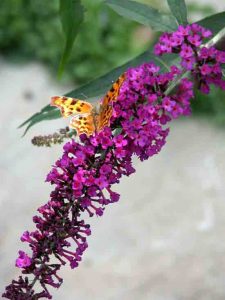
6. The vigorous, sun-loving Butterfly Bush (Buddleja davidii) attract bees as well as many varieties of butterfly.
Lance-shaped, grey-green leaves are produced on arching shoots. The honey-fragrant flowers, appearing on dense, drooping panicles in summer and autumn, are available in a range of enticing colours.
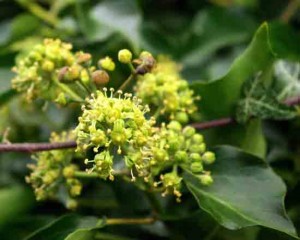
7. Ivy is an indispensable plant for wildlife. Its year-round dense coverage provides nesting places for birds, especially wrens, and hiding places for insects and small mammals. On mature plants, spherical clusters of tiny, yellow-green flowers are produced in autumn, followed by black berries, providing late nectar for insects and berries for birds. Ivy is one of the main plant foods for the holly blue butterfly.
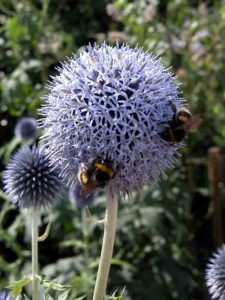
8. An architectural beauty, Echinops bannaticus ‘Taplow Blue’ carries spherical steel-blue flowerheads on tall, woolly stems and gradually open to reveal bright blue starry flowers, beloved by bees. As the flowers go over, rub away the faded florets, leaving globes of seedheads to provide food for birds and an attractive winter feature.
Need a Wildlife Friendly Planting Plan?
The Weatherstaff PlantingPlanner makes it easy for you to create a garden which is beneficial for wildlife. The interactive gardening software designs all-season planting plans for your garden, tailored to your garden’s soil and light conditions.
Choose your favourite planting style (for example: cottage, contemporary, Mediterranean) and pick your colour scheme. Select the Wildlife Garden option as an Additional Planting Requirement. The PlantingPlanner will draw up a planting plan, crammed with wildlife friendly plants, to help you create a haven for wildlife in your own back garden.
Tips for Wildlife Friendly Gardens
- Hedges or groups of shrubs create shelter and safe corridors for small animals to travel along.
- Leave the tidying up of perennials until spring to provide winter food and shelter for insects and small mammals.
- Bird feeders, log piles, bat boxes and ladybird homes will be appreciated by your visitors.
- Introducing a pond is one of the best ways to encourage wildlife into your garden, but water of any kind, from a water feature to a birdbath will be beneficial.
- Think carefully about using chemicals to control pests and diseases – they will destroy indiscriminately, disrupting the food chain for beneficial visitors to the garden.
- Don’t forget a bench in an unobtrusive corner to observe your wildlife haven.
Pin for later
For more gardening ideas, click here to follow the Weatherstaff PlantingPlanner on Pinterest.


